Most dog owners today choose to spay or neuter their pets. And while these are routine procedures with millions performed annually, it isn’t a decision to take lightly.
Also called altering, fixing, or desexing, spaying and neutering procedures will affect your dog in many ways, with several pros and cons to consider.
We aren’t pushing you one way or the other, rather we’re hoping to give you insight on the procedure itself so you and your vet can make the best decision for your fur friend.
We’ll discuss the pros and cons and much more about altering your dog below!
The Pros & Cons of Spaying and Neutering: Key Takeaways
- Spaying and neutering are dog sterilization procedures that prevent dogs from reproducing. Spaying refers to the sterilization of female dogs, while neutering refers to the sterilization of male dogs.
- Spaying and neutering offer a number of benefits to dogs and their owners. Aside from preventing unwanted dog pregnancies that contribute to stray and unwanted pets, spaying and neutering operations can help prevent a few health ailments, including some kinds of cancer.
- However, having your pet spayed or neutered can also present some risks and potential problems. For example, not only will your dog have to undergo an operation, which has several inherent risks, but in rare cases, some dogs may also experience long-lasting issues, such as incontinence.
What Are Spaying and Neutering?
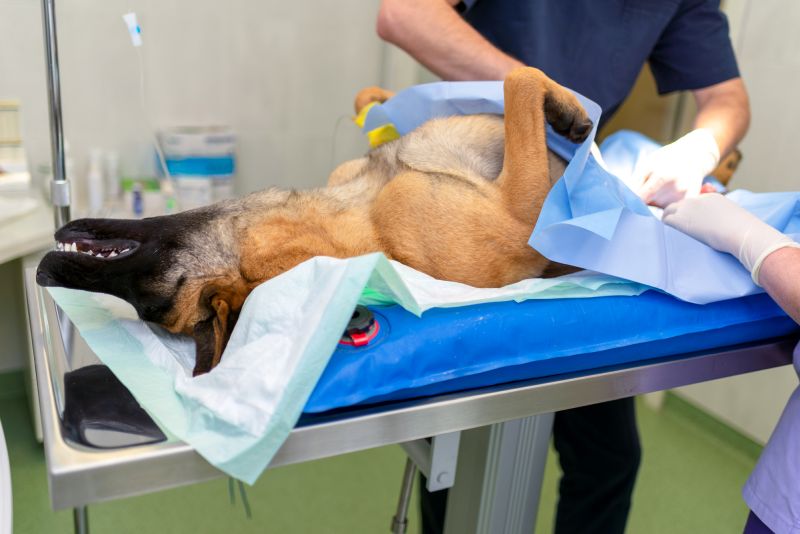
Often incorrectly used interchangeably, spaying and neutering are different procedures, though both lead to sterilization. In other words, these surgeries are forms of permanent dog birth control.
Spaying is performed on female dogs. Also called an ovariohysterectomy, this procedure removes your dog’s uterus and ovaries.
Less commonly, some vets perform a procedure called an ovariectomy, in which only the ovaries are removed. The reasons for one procedure versus the other vary, though the ovariectomy is thought to be less traumatic, as it requires a smaller incision and fewer sutures, leading to a faster healing time.
Neutering or castration is a procedure performed on male dogs where the testicles are completely removed. Neutering greatly reduces the amount of testosterone in your male dog’s body, which can impact his growth and behavior.
Compared to spaying, neutering is far less invasive and has a shorter recovery window.
How Many Dogs Are Spayed or Neutered?

It’s difficult to pinpoint the exact amount of dogs who’ve been sterilized, as dog spaying and neutering statistics aren’t maintained in a single, centralized database. But the AKC estimates that approximately 80% of dogs in the U.S. are altered.
Worldwide, the numbers are harder to gauge. Percentages vary, but New Zealand boasts a 78% altered rate, while the UK (57%) and Ireland (47%) have lower sterilization rates.
Figures are even harder to come by in areas where studies are not regularly performed, such as Africa, Asia, South America, and Eastern Europe. Based on the high amount of street dogs in some of these locations, it’s safe to say spay and neuter rates likely aren’t as high.
Worldwide, chemical sterilization is far more common than it is in the United States. This is due to a number of reasons, including the attitudes toward pet surgeries vastly differing between nations and the U.S’s complicated regulations surrounding dog contraceptives.
Is Spaying or Neutering Always a Good Idea?

In short, no. Like any procedure, altering is not a good fit for every canine. It may be that the owner plans to breed the dog, or the dog might have medical conditions — like hemophilia — that make surgery too risky.
That said, you have some important questions to ask yourself and discuss with your vet if you’re on the fence about altering your pup:
- Can you care for your dog after surgery? Post-surgical care can be tough, with limited movement, pain management, and incision site checks. Your pooch can’t run, jump, or play for a few days (or weeks, for females), so you need to block off extra time for basic care, like walking your dog on a leash to potty and potentially carrying your pupper down stairs. For most owners, this isn’t an issue, but if you’re limited in mobility or time, it can get tricky.
- Can you afford the surgery? We all know veterinary care isn’t cheap. Neutering costs vary, starting around $50 and going up past $300. Spaying is more expensive and can cost upwards of $500. Pricing fluctuates based on your location and the size of your dog. The good news is, low-cost spay and neuter programs can greatly reduce your costs. Some may even cover your dog’s surgery for free if they’re a pit bull or other bully breed type.
- Can you afford potential complications? The cost of surgery may be low, but some dogs have pricey hiccups during recovery. For example, my Lab had an unfortunate swelling situation after bolting off-leash when a friend walked him while I was at work. This brought a $150 neuter bill to well over $500 and resulted in uncomfortable surgery site compression exercises for my pooch.
- Can you afford NOT altering your dog? While sterilizing your pooch can be expensive, not altering your pet can cost you even more money over the long run. Not only are there potential health risks (like cancer) to consider, which can cost thousands of dollars to treat, but there are other costs, too. This includes things like paying for sanitary products during a female’s heat cycles, or increased fees for boarding or licensing your dog. Not to mention the costs associated with caring for a pregnant dog and eventual puppies if your dog gets pregnant (plus the potential costs associated with complications, such as caesarean delivery or pyometra surgery).
- Are you legally required to alter your dog? Some localities require all dogs to be desexed, while others require certain breeds (like pitties) to be altered. Check your local ordinances to be sure.
- Are you prepared for life with an intact male or female? Living with a female dog in estrus gets messy, as bloody discharge makes diapers (“period panties“) necessary two to three times per year for more than a week at a time (however, some owners simply use indoor dog gates to confine bleeding females to places with tile or other easy to clean floors). This will not only upend your entire routine, but your female may also try to wander or start gaining the attention of male dogs. Similarly, an intact male can be a handful. The added testosterone may lead to more aggression or wandering to find a mate. Male dogs are also prone to leg-lifting or “marking,” potentially in your house.
- Does your dog have a condition that makes altering beneficial? For males, retained or “undescended” testicles should be removed to prevent testicular cancer later in life.
- Does your dog need another procedure that can be added on to altering? Sometimes, another condition is addressed at the time of desexing, reducing the amount of times your dog needs to go under anesthesia. My Maya, for example, had an umbilical hernia repaired at the time of her spay. Some owners of at-risk breeds opt to have their pup’s stomach tacked at the time of surgery, an elective procedure that prevents the stomach from twisting during bloat. Similarly, owners of brachycephalic breeds may have their dog’s nostrils widened (to make breathing easier) while being spayed or neutered.
When Is the Best Time to Spay or Neuter a Dog?
Altering at the right age can save your dog from health issues or complications down the road. This window varies significantly by breed, so it’s important to discuss this with your veterinarian ASAP.
Recommendations differ by expert, too, with some veterinarians advising that clients desex their dog before a female’s first heat (around 5 months of age) while others opt to wait. Meanwhile, animal shelters may routinely alter puppies as early as 8 weeks.
Altering your dog too early risks serious health concerns later in life, including:
- Growth issues: Large breed dogs should be desexed after growth is complete to avoid joint and bones issues, including an increased risk of painful (and expensive) CCL tears.
- Cancer: Some canine cancers like hemangiosarcoma, lymphoma, and mast cell tumors are more common in dogs that were neutered earlier in life.
- Female incontinence: Spaying too soon can lead to lifelong issues with incontinence or sudden ones later in life.
But there are also things to consider when thinking about having a mature dog spayed or neutered.
For example, the rates of hemangiosarcoma were four times higher in dogs spayed at a late stage of life relative to those who remained unaltered, according to a 2013 study of golden retrievers, published in PLOS ONE.
Additionally, some vets feel that spaying and neutering a dog later in life is harder on the dog’s body and leads to longer recovery times.
The Pros of Spaying or Neutering a Dog
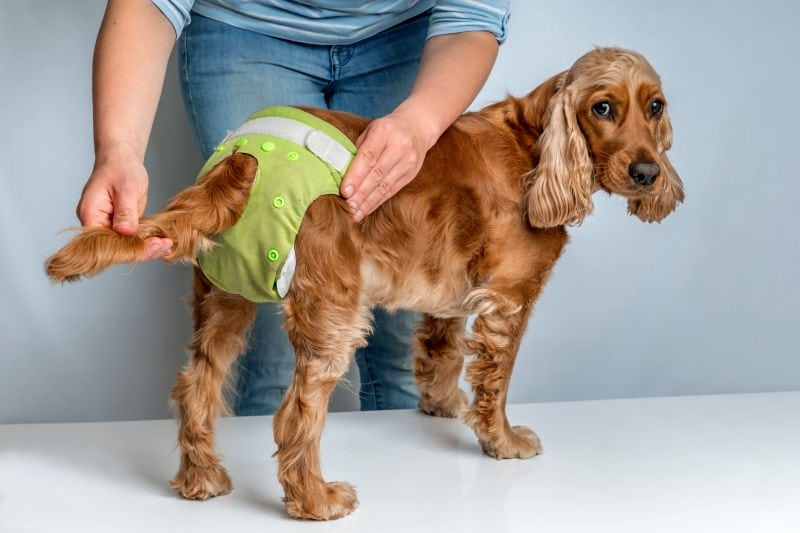
Altering your pup offers several benefits to consider. Some are more concrete than others, but all deserve consideration, including:
- Spaying and neutering prevent unwanted pregnancy. A pregnant pup is pricey to care for, with her food and vet bills growing along with her tummy. Not only is it expensive, but it can be dangerous, depending on your dog’s breed, with some, like bulldogs, commonly needing invasive cesarean sections to deliver puppies. Cutting down on accidental litters also prevents overpopulation, a sad ongoing problem with doggos resulting in many unwanted pets who wind up in shelters or euthanized.
- Sterilization can also eliminate serious health risks. Certain cancers, like testicular and uterine, can be avoided entirely by sterilizing your dog. Sterilization will also allow you to reduce the risks of other cancers, like mammary cancer. You can also prevent pyometra, a dangerous infection of the uterus, by spaying your dog.
- Spaying ends messy heat cycles. Once your dog is spayed, you can say goodbye to doggy diapers and blood cleanup twice a year.
- Spaying and neutering can save money over the long-run. By eliminating the risk of pregnancy and several cancers and infections, your vet bills may be reduced significantly. You may also spend less on licensing and boarding, as previously discussed, since many facilities charge extra for housing non-altered animals due to the increased risk.
- Neutering may stop humping behavior. With the reduction of sex hormones, you dog might be less likely to mount you or your pillows. This isn’t the case for every pooch, however, so don’t let this one tilt you one way or the other.
- Altering your dog may provide positive behavioral changes. Altering can make your dog less likely to roam, and it can calm them down a bit too. It can also reduce certain kinds of aggression. Just know that, as with humping, this isn’t the case with every dog.
The Cons of Spaying or Neutering a Dog

While many benefits of altering exist, there are some less desirable ramifications and risks to the surgery too. These vary from the obvious to some that may surprise you, including:
- It’s surgery: Surgery isn’t fun for anyone to heal from. Spaying is more invasive and has a longer recovery time and will cause more pain than a simple neutering.
- Anesthesia risks: Anytime anesthesia is involved, there’s a possibility of complications, and some breeds, like brachycephalic bulldogs, are in more danger when they go under.
- Surgery complications: Recovery comes with strict rules about aftercare and activity. If your dog outmaneuvers her e-collar and licks her sutures, you run the risk of the wound opening or getting infected. Jumping and running can also injure the surgery site.
- Can’t breed ever again: While this is the intended effect for most owners, it can be a downside for those merely seeking potential health benefits of altering.
- Incontinence: Some females experience issues with urinary incontinence or excited urination after spaying. This may make doggy diapers a must in the house.
- UTIs: Females are particularly at risk of urinary tract infections in the days following the procedure, as excessive vulva licking after urination can lead to a spike in bacteria. If you notice your dog paying too much attention “down there,” it’s best to give your vet a call.
- Changes to growth rate and bone formation: Altering dogs when they’re too young can impact growth, particularly with large and giant breed dogs.
- Weight gain: The hormonal changes caused by desexing can increase your dog’s appetite, reduce the number of calories your dog burns, and lead to your pooch gaining a few pupper pounds.
- Personality and behavioral changes: Your dog may be calmer after surgery or “lazy” in some owners’ eyes. Others report fear aggression or separation anxiety (although this is less common). This obviously isn’t always the case and should be discussed with your veterinarian.
- Change in male’s appearance: Some owners are bothered by the shrinkage in a male dog’s scrotum, but your dog likely won’t notice. If you’re looking to retain your dog’s natural volume back there, you can opt for canine testicular implants (just note that not all vets are a fan of this procedure).
Alternatives to Spaying and Neutering a Dog

If you choose not to alter your dog or can’t because of an underlying health condition, there are several methods you can use to prevent an oops litter and harmoniously house your intact canine, including:
Birth Control Medications
There are various pills, injections, and implants available that can sterilize your dog. Some injections even offer permanent sterility for male dogs. Like desexing surgeries, these have their share of risks, including various cancers, hormone imbalances, and weight gain.
Barriers
To avoid surgeries and medications, you could use clothing or equipment to prevent mating, like this chastity device that looks like it’s straight out of 50 Shades of Woof.
It also features a nifty built-in pad holder, which will help contain the mess of your pup’s heat cycle. You could also fashion a similar device out of a pair of human undies and pants or slip a dog belly band on your male, though like the chastity device, these aren’t always accident-proof.
Management
The most foolproof way of preventing pregnancy without opting for sterilization would be isolating your female dog when she’s in heat. This means you’ll need to keep her completely separate from any intact males.
This isn’t always easy (especially motivated males may break through doors or windows), so having your males take a mini vacation to a friend’s house while your female is in heat is ideal.
***
Is your doggo altered? Intact? Do you have any tips or tricks for sterilization recovery or living with an intact canine? Let us know in the comments!







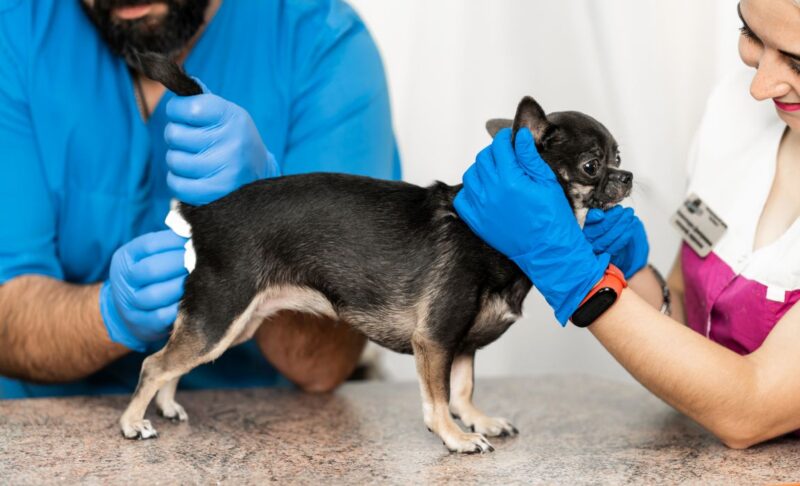
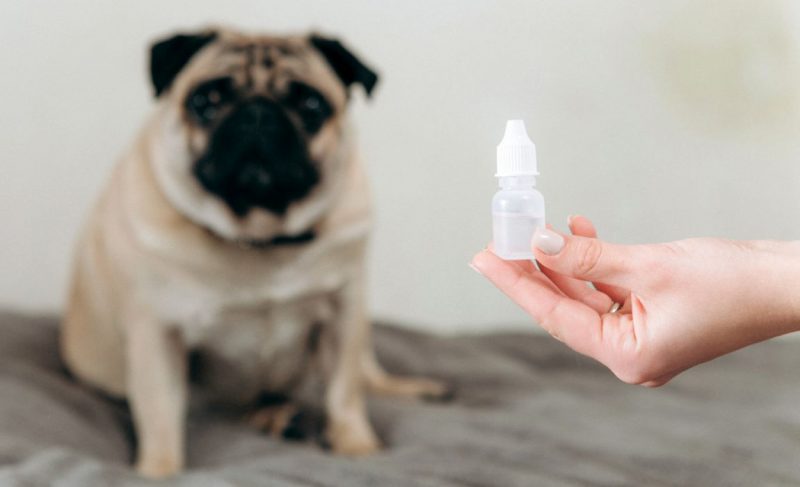

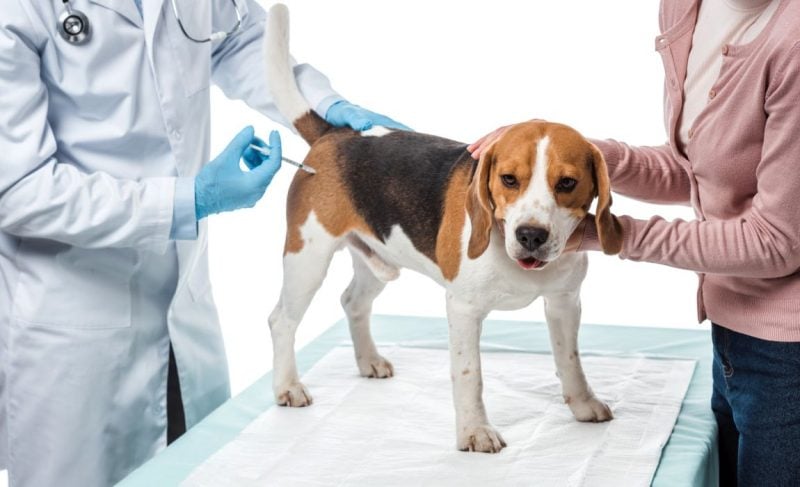
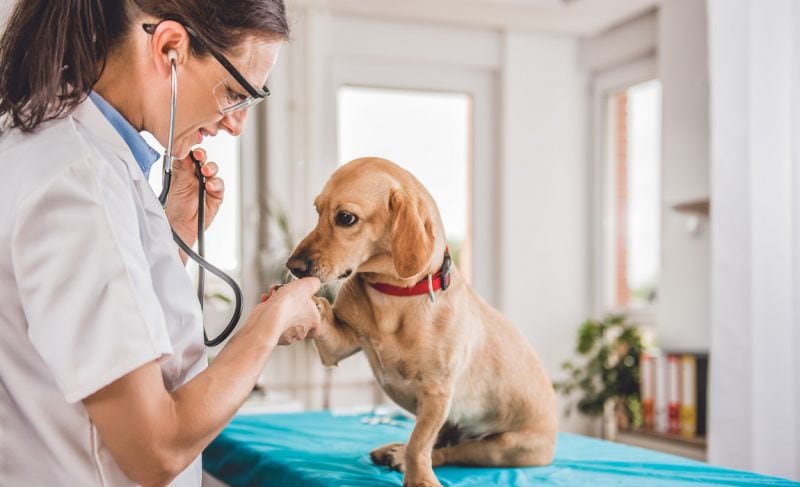
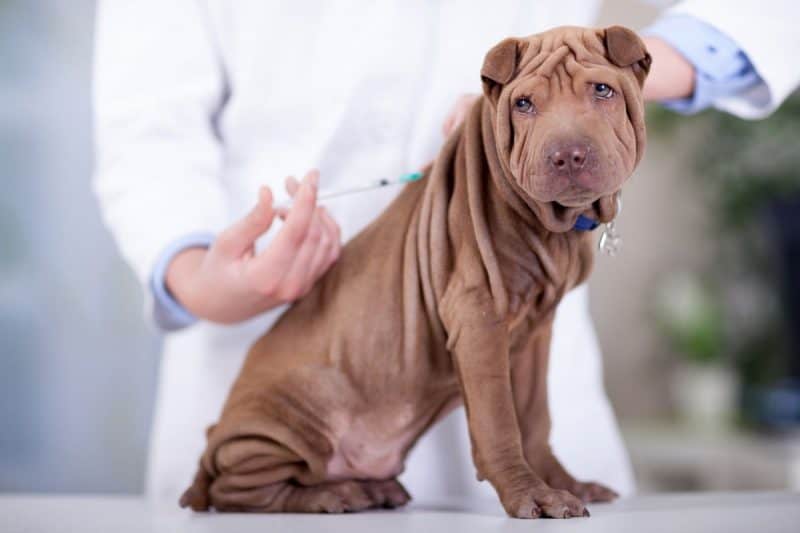

Leave a Comment